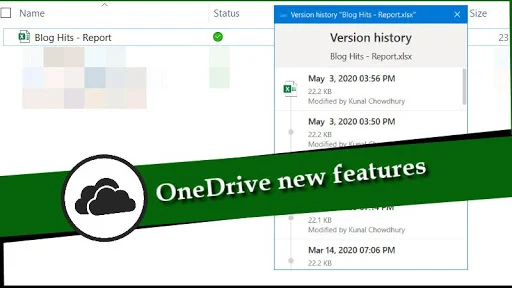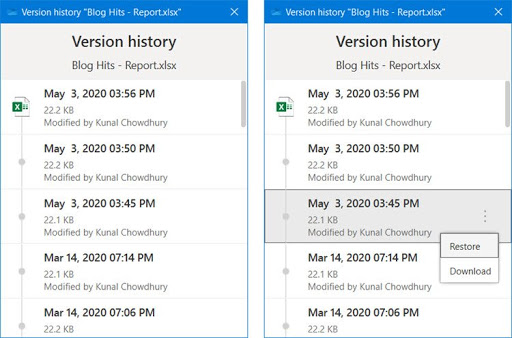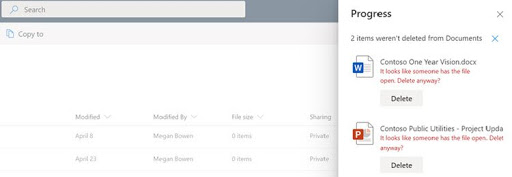Microsoft published the OneDrive Roadmap Roundup, where they have mentioned few new features rolled out to OneDrive as part of the April 2020 update. This update brings sensitivity labels to Office documents, view version history of a file right from the desktop, and the ability to delete locked files. To know more about the new features, currently rolling out to OneDrive, continue reading further.

- You can now add sensitivity labels to OneDrive and Sharpoint office documents.
- You can now view the version history of a file from the desktop.
- If you are the owner of a locked file, you can now force delete it.
Sensitivity labels with protection for Office files
![Sensitivity labels with protection for Office files Sensitivity labels with protection for Office files]()
Organizations can now use sensitivity labels to their business-critical data by using the Microsoft Information Protection (MIP). Yesterday Microsoft announced the general availability of sensitivity labels with protection for Office files in SharePoint and OneDrive. This is one more step to provide you comprehensive protection across documents and emails in Microsoft 365 services.
Unless the sensitivity labels for Office files in SharePoint and OneDrive are enabled, you can't apply your that in Office on the web. You don't see the Sensitivity button on the ribbon or the applied label name on the status bar. Admins can create a sensitivity label and associate the protection policies (encryption and visual marking) enabling your users to classify and protect organizational data.
When you download or access this file from SharePoint or OneDrive, the sensitivity label and any encryption settings from the label are reapplied with the file, and these settings remain enforced wherever the file is saved.
View, restore and delete previous versions of your files
![View and restore previous versions of your files View and restore previous versions of your files]()
The next feature part of this release is the ability to view, restore, download, or delete the previous version(s) of your files. You can do this directly from your desktop via File Explorer or Mac Finder.
To view the version history of a file saved on OneDrive, you can right-click on the file and click the "Version history" context menu item. This will open a list of the previous version(s). You can then restore the required versions. You can also download or delete any previous version history from this view. This feature is currently rolling out to users.
Allow user to override locked file to delete
![Allow user to override locked file to delete Allow user to override locked file to delete]()
The tech-giant received a lot of feedback that people are unable to delete a document in their OneDrive because they had it open in another tab on a different computer, or because someone else had it open and forgot about it, effectively locking the document.
The next feature that's rolling out to OneDrive is the ability for the user to override such locked files and perform a delete operation on it while someone (or yourself) has it open, intentionally or not.








